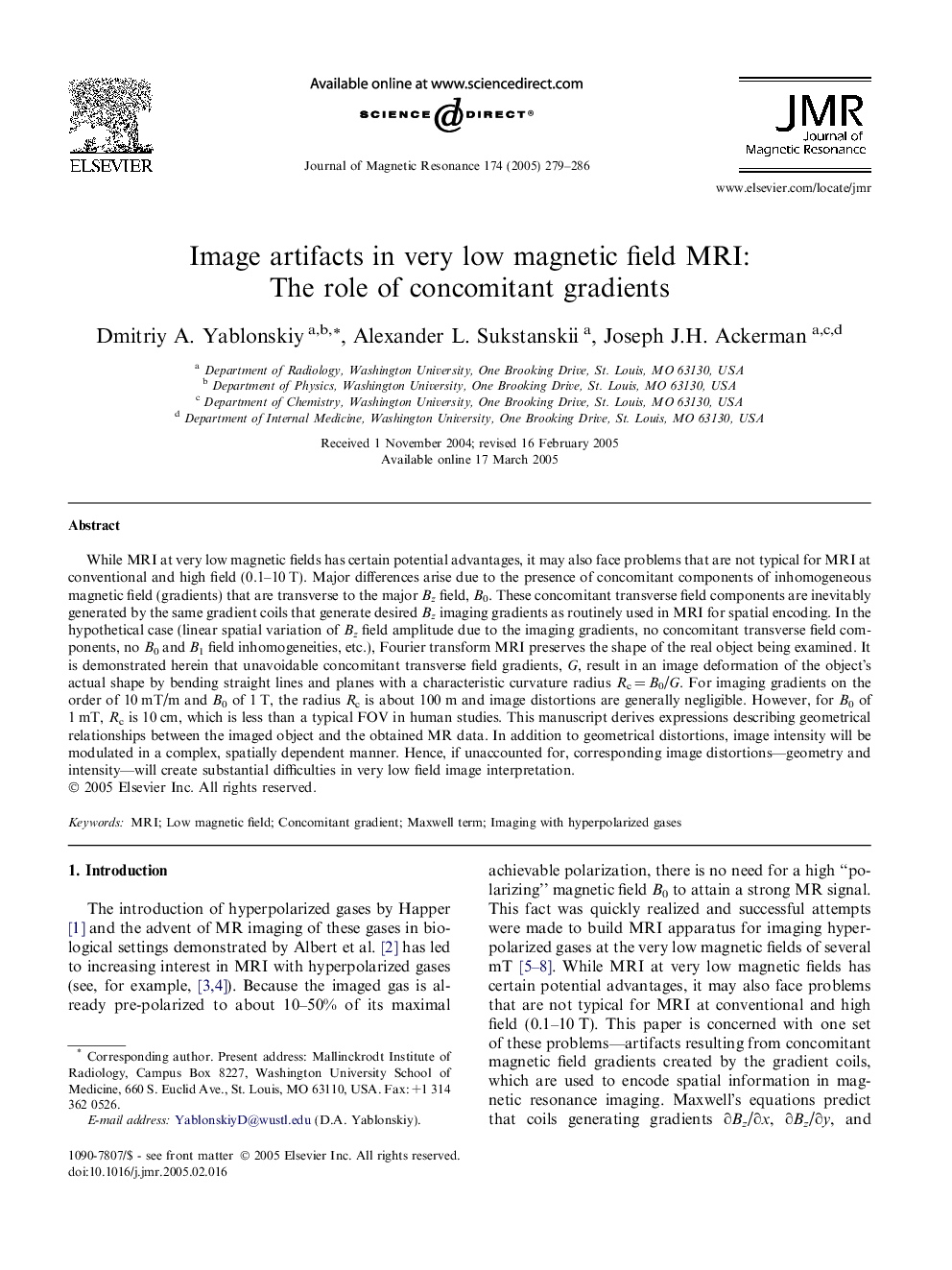| Article ID | Journal | Published Year | Pages | File Type |
|---|---|---|---|---|
| 9587511 | Journal of Magnetic Resonance | 2005 | 8 Pages |
Abstract
While MRI at very low magnetic fields has certain potential advantages, it may also face problems that are not typical for MRI at conventional and high field (0.1-10 T). Major differences arise due to the presence of concomitant components of inhomogeneous magnetic field (gradients) that are transverse to the major Bz field, B0. These concomitant transverse field components are inevitably generated by the same gradient coils that generate desired Bz imaging gradients as routinely used in MRI for spatial encoding. In the hypothetical case (linear spatial variation of Bz field amplitude due to the imaging gradients, no concomitant transverse field components, no B0 and B1 field inhomogeneities, etc.), Fourier transform MRI preserves the shape of the real object being examined. It is demonstrated herein that unavoidable concomitant transverse field gradients, G, result in an image deformation of the object's actual shape by bending straight lines and planes with a characteristic curvature radius Rc = B0/G. For imaging gradients on the order of 10 mT/m and B0 of 1 T, the radius Rc is about 100 m and image distortions are generally negligible. However, for B0 of 1 mT, Rc is 10 cm, which is less than a typical FOV in human studies. This manuscript derives expressions describing geometrical relationships between the imaged object and the obtained MR data. In addition to geometrical distortions, image intensity will be modulated in a complex, spatially dependent manner. Hence, if unaccounted for, corresponding image distortions-geometry and intensity-will create substantial difficulties in very low field image interpretation.
Keywords
Related Topics
Physical Sciences and Engineering
Chemistry
Physical and Theoretical Chemistry
Authors
Dmitriy A. Yablonskiy, Alexander L. Sukstanskii, Joseph J.H. Ackerman,
